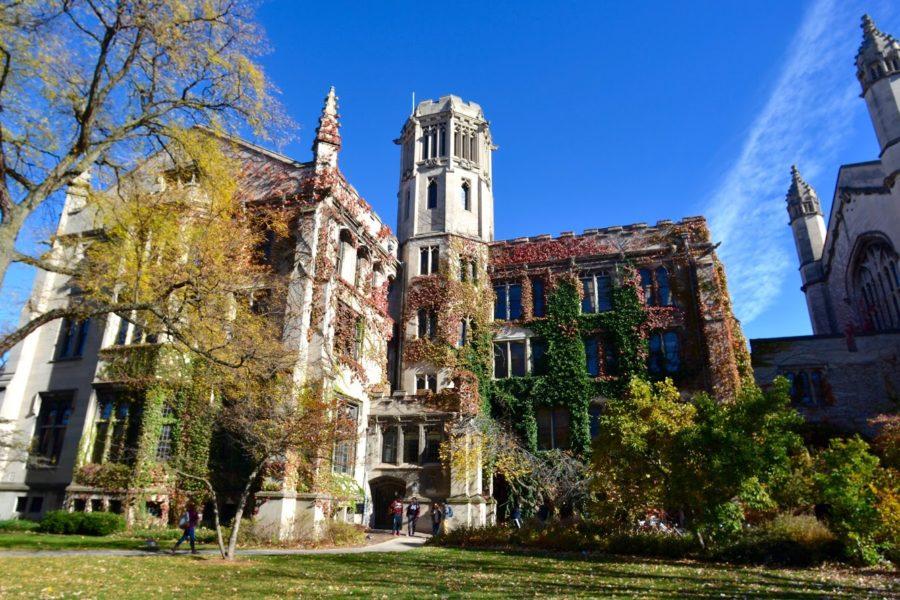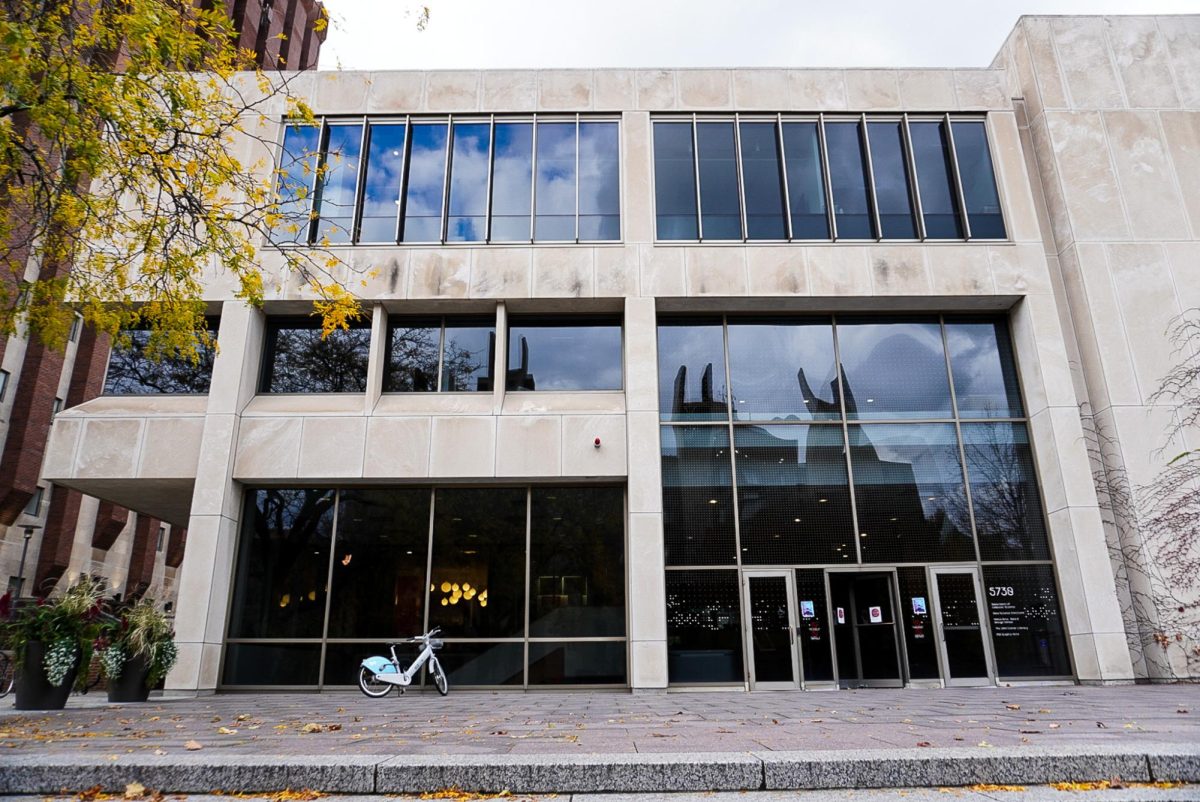The Office of Undergraduate Student Housing publicly announced Wednesday that it may close Shoreland Hall and replace it with another dormitory, most likely south of the Midway.
If the decision is made to spend money on a new dorm instead of funneling it into the Shoreland, construction could begin as early as winter quarter, according to an e-mail sent by the housing department.
Although the future of the Shoreland has been debated within the department over the last several years, the e-mail announcement was the office’s first official move to review the role of the building as an undergraduate dormitory.
The Shoreland, a former luxury hotel on South Shore Drive that once played host to guests like Elvis Presley, Al Capone and Jimmy Hoffa, has served students since 1976, and currently houses more than 650 students and faculty.
In a letter sent via e-mail to Shoreland and Broadview residents Wednesday night, Cheryl Gutman, deputy dean of student housing and dining services, listed the factors leading up to the housing department’s decision to re-evaluate the Shoreland’s role. Among these factors was the Master Plan, the University’s campus renewal plan, which calls for the addition of 250 new beds in the housing system within the next four years.
“The question before us now is whether we should continue to invest significant resources in the Shoreland or invest instead in a new residence hall that would achieve our goals of satisfying student demand for housing closer to the heart of campus life and will also satisfy our short-term and long-term facility needs,” Gutman said.
Although the Master Plan originally included keeping the Shoreland, the increasing size of each incoming class has created the need for more accommodations. The housing office is evaluating the possibility of building a new dormitory near campus that would replace Shoreland’s 650 beds. Gutman also said that if the Shoreland were to close, bus service to Broadview and Stony Island would not be affected.
Money, money, money
Another factor cited in the letter was the cost of maintenance on Shoreland’s façade. According to Gutman, a 2001 facility audit of the Shoreland revealed that the University needed to invest $25 million in the building. Another inspection made by the city concluded that the University needed $2 million worth of work on the exterior or the city would shut the building down. Though these repairs were completed last year, the city is also requiring $19 million more of repairs within the next few years.
The costs, in total, are projected to be $50 million—roughly similar to the cost of building Max Palevsky Commons.
Gutman also referenced a shift of campus activity on the quads. The construction of the Ratner Athletic Center, Max Palevsky, and Barlett Dining Hall has created a nexus of student activity on campus—a positive effect that the housing office wants to continue to develop.
The number of incoming students who want to live in the residence halls relatively far from the quads has decreased significantly in recent years, according to Assistant Dean of Housing Katie Callow-Wright. “Likewise, there has been an increase in the demand for housing close to the quads among incoming students. Additionally, the rate of return of upperclassmen to the Shoreland has decreased,” Callow-Wright said.
Gutman said that because of the Shoreland’s status as a landmark on the National Historic Registry, the building will not be torn down. Ideas for possible future uses of the building include renovating it into private apartments or the University having a developer refurbish and lease it to faculty.
Residents’ reactions
Lawrence Rothfield, an associate professor in the department of English language and literature and the current Shoreland Resident Master, wants nothing more than for the University to keep student housing in the Shoreland.
“The Shoreland is perhaps the most interesting building in all of Hyde Park,” Rothfield said. “What we love above all, though, is the energy, intelligence, and quirkiness of the residents. My sense from talking to first-years who opt for the Shoreland is that they are in general—or at least think of themselves as-—a more mature, focused, self-reliant, activist, and worldly group than those who choose the coziness of Palevsky, and certainly the second-years who move in here identify themselves in this way.”
Rothfield said he had known for two years that the University might recommend closing the Shoreland. Still, he said that the Shoreland’s location and size creates a hospitable and vibrant atmosphere for students. Having 600-plus students in one place means that, for Rothfield, it is relatively easy to organize events—especially ones that require large groups.
“What sets us apart is the size, location, and wonderful spaces of our building,” Rothfield said.
Many residents of the Shoreland were resistant to the idea of closing their beloved hall.
Ted Matson, a second-year in the College and resident of Dewey House on the fifth floor, considers keeping the Shoreland for students a wise investment.
“While it may be true that the cost of renovations to our beloved Shoreland make it the Old Yeller of college dormitories, its reputation as perhaps the most spacious and livable dorm of any college, anywhere, is a financial boon to the University,” Matson said. “Its loss would actually hurt the bottom line.”
Some long-time residents, though, saw the closing as inevitable and for the best. Randy Sweis, a fourth-year in the College and resident of Filbey House, ticked off the positives of living closer to campus: having better access to resources such as the new athletic center, libraries, bars, professors’ offices, other dorms, and coffee shops.
“It is invaluable to improving the quality of life on campus for undergraduates,” Sweis said. “A new dorm closer to campus would give undergraduates a better sense of community while providing the campus much more life and energy.”
John Dombrowski, a first-year in the College and also of Dewey House, understood the necessity of cost effectiveness, but he was not satisfied. “There is a reason Shoreland residents don’t want to leave,” Dombrowski said.
“Whether it is our understanding of the advantages of living away from campus, our love of cooking in our own rooms, or just having a few extra square feet of space, we love it here. I am willing to deal with faulty radiators, cracking paint, and weird lumps in the carpet for the feeling of community, for the view, for the atmosphere.”
Still in Limbo
Gutman emphasized that the final decision about the Shoreland has not been made, and that the housing office is still considering all options. She also said that such a closing would not take effect for another four years.
“From reaction so far, it seems to me that many students think the Shoreland will close next year.” Gutman said, “And I think that many did not read the entire letter. I encourage all to read the communication carefully, visit the Web site with some detailed info in it when that is up, come to public discussions, and if part of the survey sample, respond.”
Debates and meetings about the future of Shoreland will be set up next week, including a public discussion at the Shoreland and a public meeting at Hutch Commons for all those who live on campus. Housing is currently working with Student Government, Inter-House Council and the Shoreland Council to coordinate the meetings for eighth week.
10-17-03shoreland







